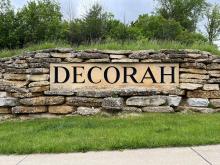
Even before the central Florida city of Ocala in Marion County became officially known as “The Horse Capital of the World,” the city – home to 61,810 Floridians and over 1,200 county-wide horse farms – was already galloping toward high-speed Internet connectivity. In recent years, the Ocala Fiber Network (OFN) has expanded into offering residential service, trotting carefully towards a citywide fiber-to-the-home (FTTH) finish.
It began in 1995 with the Ocala municipal electric department upgrading its substation monitoring (SCADA) system, which has been estimated to have saved the city $25 million in networking costs since. Over the past two years, OFN has extended the network to bring affordable, reliable, high-speed Internet service to city residents, neighborhood by neighborhood.
While the municipal network has been providing high-speed Internet service for the past decade to area businesses, healthcare facilities, community anchor institutions, and schools throughout the county, OFN launched residential service in 2019 and is now serving 2,500 residential subscribers in four city neighborhoods.
“We did four pilot neighborhoods. Our target goal was to have a 30 percent take rate in each neighborhood. In the largest neighborhood (the Highlands neighborhood) with a thousand homes, we have a 42 percent take rate. We still have a challenge in one neighborhood (Happiness Homes) with about a 10 percent take rate that we think is mostly an educational challenge,” Ocala Fiber Network Director Mel Poole told us in a recent interview.
After deploying 800 miles of fiber, overhead and underground, Poole said, OFN is seeing “steady, methodical growth” of its residential subscriber base “mostly by word-of-mouth” while they continue to sign up new business customers. And, he said, from a financial perspective “we are still in the black.”
OFN Powers Through Pandemic
The network really showcased its value with the onset of the pandemic. Besides having the capacity to handle requests from businesses and hospitals to bump up the bandwidth, OFN also was able to quickly set up Wi-Fi access points at ten different schools in the county, allowing families who did not have high-speed Internet access the ability to drive to those school’s parking lots to download or upload school work. OFN has also seen to it that the city’s parks have free Wi-Fi.
And when the county’s Emergency Operation Center set up a vaccination site at the local mall, OFN was able to provide the temporary site with a gig connection within 24 hours, which allowed emergency personnel the ability to access medical files and digitally document county residents who received the COVID vaccine.
“That was a pretty big deal to us,” Poole said. “It showed that we are pretty flexible and agile.”
The network’s performance during the pandemic not only demonstrated its worth to local officials and residents, it also garnered attention far beyond the city limits. OFN was recently announced as a winner of the IDC Government Insights’ fourth annual Smart Cities North America Awards (SCNAA), recognized in the category of Digital Equality and Accessibility. According to the IDC, “winners in the SCNAA illustrate best practice examples of how forward-thinking municipalities are effectively leveraging technology and innovation to offer new services and economic opportunities and to meet the needs and expectations of citizens and residents.”
A Vision for Everything
Poole continues to think forward about ways OFN can better serve the needs and expectations of its residents. “In the next 3-10 years, my vision is to have the infrastructure in place for autonomous vehicles and to support what I call the Internet of Everything. Already, companies can come here and test the Internet of Things (IoT) and the devices needed. They can hook up to a robust network.”
The challenge, as always, is finding the funding to build-out the FTTH network city-wide, which is estimated to cost about $90 million, all while having to compete with the big incumbent providers (Cox; Lumen, formerly CenturyLink; AT&T; and Spectrum), Poole said. According to BroadbandNow, Cox’s cable offering is available to most of the households in the city. Lumen’s DSL service is likewise universally available, with its fiber service open to just a quarter of residents.
Residents choosing OFN get 300 Mbps symmetrical service for $60/month. Businesses can choose from a variety of packages ranging from $99/month to $250/month.
The initial capital to build the core network came from a $4 million interdepartmental loan from the electricity utility reserve funds. The pilot project expansion was funded with telecommunications revenues. “We are an enterprise fund, which in essence means instead of using taxpayer dollars, we run like a business,” is how Poole explains it.
To move forward with continued network expansion into other parts of the city and county, OFN will rely on funds generated by the network through its Capital Improvement Projects (CIPs) process. However, Poole added, “we are exploring available grant funding to provide service for unserved and underserved areas.”
The proof of concept has already been well-established. Or, as Poole puts it: “This is the horse capital of the world running at gigabit speed.”
You can listen to Mel Poole discuss the growth and evolution of OFN on our Community Broadband Bits podcast here.
Header and inline images courtesty of Ocala Fiber Network







